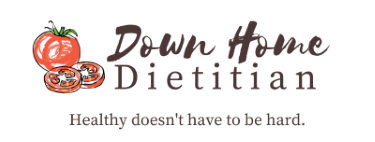You may or may not know that energy provided through our diets (measured in calories) comes primarily from three different substances called macronutrients. If you’re not sure what they are, I’ll give you a hint – check the post title! Carbs and proteins each provide 4 calories per gram and fats provide 9 calories per gram. I mentioned on Monday that the MyPlate diet was leaning me in a more carb-a-licious direction than I’m used to. Left to my own devices, I tend to focus more on protein in my diet. For healthy adults, the Dietary Guidelines recommend that 45-65% of our calories come from carbohydrate, 10-35% from protein, and 20-35% from fats. Here’s an analysis of what I ate Monday and Tuesday on the MyPlate diet meal plan:

My fat intake for yesterday crept up because I chose to use my discretionary calories on cookie dough ice cream (yum!), but you can see that I’m still within the ranges for everything based on the plan. That’s all well and good, but where do these percentages come from?
An excellent question. The ranges are based on the Dietary Reference Intakes (formerly known as the Recommended Dietary Allowances) created by the Institute of Medicine. The process for creating these is similar to that for creating the Dietary Guidelines: experts, committees, research, deliberation, gigantic reports, and finally, the guidelines themselves. The guidelines represent what the experts have determined to be a safe, healthful, and adequate intake of any given nutrient. Each macronutrient plays a different role in the body.
- Carbohydrates are anything that can be broken down into sugar in the body. Most of that sugar ends up in the form of glucose, which is processed to create energy.
- Proteins are often referred to as “building blocks”. They make up the cells of the body and act as transmitters and transporters. If dietary carbohydrates are restricted, they can also be used for energy.
- Fats provide a concentrated form of energy as well as components of hormones and other vital goodies. They also provide a medium for delivering fat-soluble vitamins to our tissues.
Since it is the first thing I noticed about my newly-adopted menu (and for the sake of not deluding myself to think you’d read 10,000 words on macronutrients), I am looking into the carbohydrate recommendations first. According to a report by the Institute of Medicine, the recommendations for carbohydrates are a range between the minimum amount of carbohydrate needed to provide fuel for the brain and maintain weight and a maximum recommended amount to prevent weight gain and decrease risk of chronic disease. It goes without saying that obesity and the loads of diseases associated with it are a significant problem in our country, so I looked further into the weight aspect of the recommendation.
We have all heard of low-fat, low-carb, or high-protein diets being promoted for weight loss. Just for context, the “low” and “high” qualifiers here are in reference to intakes that are outside of the recommended ranges I mentioned earlier. In the Dietary Guidelines 2010 Report, the authors wrote that “no optimal macronutrient proportion was identified for enhancing weight loss or weight maintenance” and that “there is strong and consistent evidence that when calorie intake is controlled, macronutrient proportion of the diet is not related to losing weight.” Two paragraphs later, however, they reported that twenty research studies showed no difference in macronutrient proportion for weight loss, thirteen showed that low-carbohydrate diets were more effective than either high-carbohydrate or low-fat diets, and six showed that high-protein diets were more effective than low-protein diets. So you might be having the same issue I am here – what is strong and consistent about the evidence? Nearly HALF of the total studies included are in disagreement with the conclusion. Now granted, not all research studies are created equally. The DGAC has a scoring system that rates the impact of the study based on the quality of the research, which may have led certain studies to be considered more relevant than others. Still though, I’ll have to look into the research articles myself a little more to see how it all really pans out.
In other news, I begin my traveling tomorrow to visit my friend Abbie in Lake Tahoe for a weekend snowboarding excursion. As I will be continuing my diet through the trip I informed her ahead of time of my situation. Fortunately, Abbie is an excellent sport and fully supportive of my diet plans. Thus, I will actually be flying all of my groceries to Lake Tahoe with me (thank goodness Southwest allows a free checked bag). I am sure at some point that I will end up straying from the meal plan, but I will still aim to eat MyPlate meals and meet my calorie goals each day. After all, adaptability is an essential life skill, is it not?






